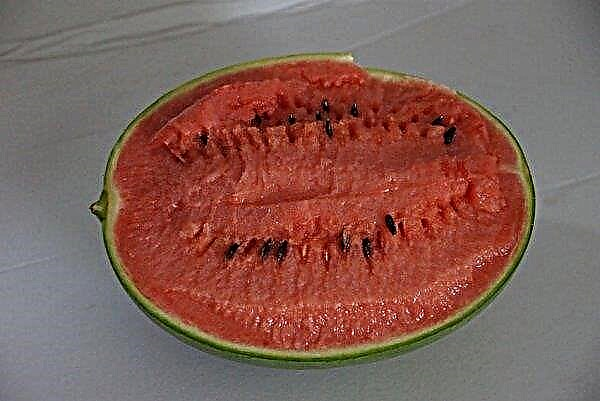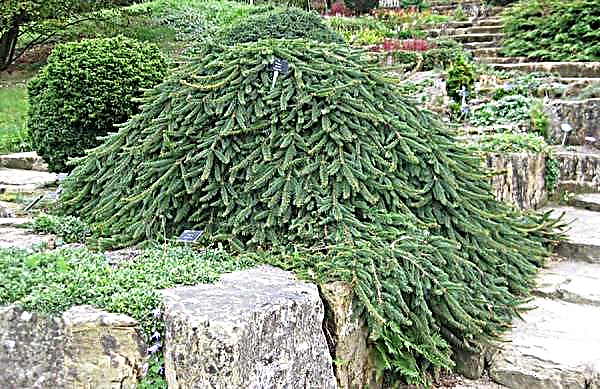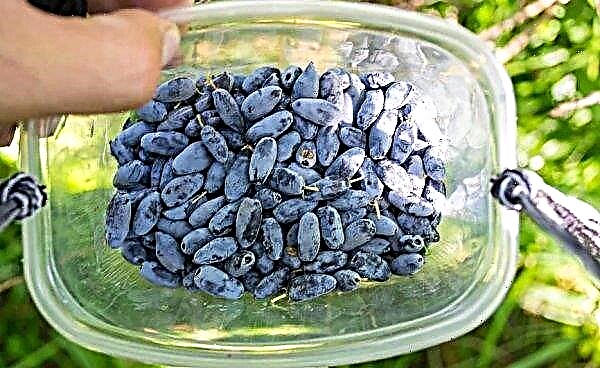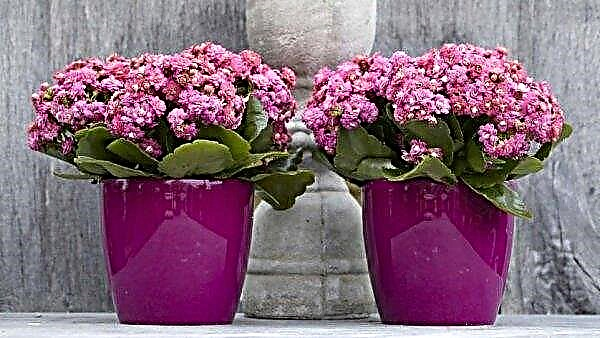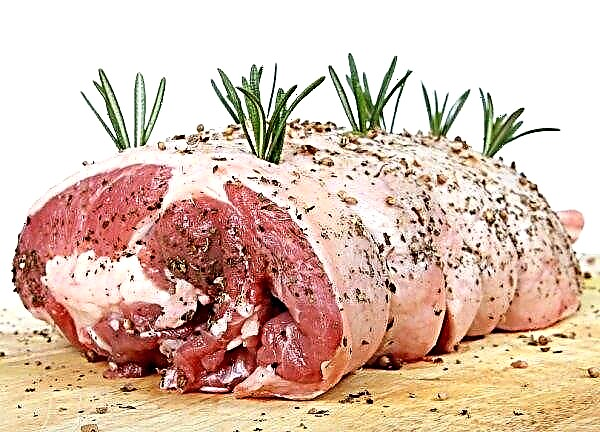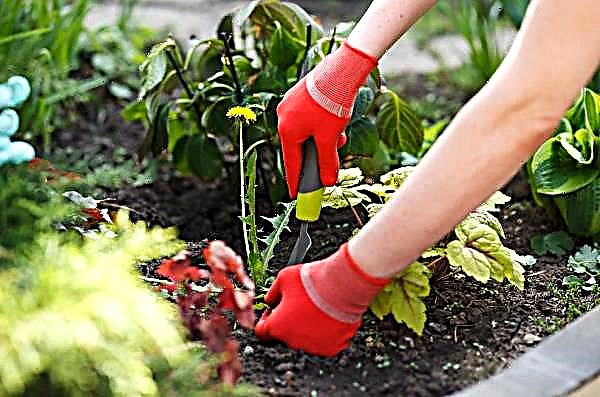An exquisite option for decorating the garden can be a dry stream. This type of space decoration has moved into modern landscape design from Japan. Such an element looks like this - like a natural riverbed, a smoothly curved line lined with pebbles, along which various plants are planted, giving the naturalness of the decorative detail. This design decision creates an atmosphere of calm and tranquility during the arrangement of the territory.
Varieties of dry streams
Based on the available popular species used in accordance with the topography of a particular area, it is possible to make various variations of dry streams.
Did you know? The art of planning gardens, parks, alleys appeared a very long time ago - the ancient Greeks began to engage in the first landscape design.
The following options are commonly used:
- Creating a single channel. This type is one winding line, its advantage is the emphasis on terrain bumps.
- Multi-line. Several branches that can intersect or join, bend around objects.
- Cascading flow (imitation of waterfalls, cascades). It is applied either in the presence of a raised platform, from which "water flows", or - in the absence of such - by organizing an artificially hill.

You can fill a decorative element with several types of materials: stones of various shapes, any size, including the alternation of large objects (boulders) with finely divided pebbles. Sand or its combination with crushed stone and other stone fillers is also a suitable option. For color decoration, choose slate or basalt. White marble and limestone are used to make the channel light shades.
Important! To brook sparkled in sunny weather, it is advantageous to use glass gravel or ready-made transparent balls.
Design application
You can use the listed types of dry streams for:
- zoning of space into areas characterized by distinctive features;
- adjustment of the proportions of the suburban area (expansion, visual increase);
- masking (if necessary, hide, for example, laid pipes);
- creating a drainage system and drainage system.
A variety of design fantasies represented by the methods of laying materials. For example, if you want to create an imitation of a dry riverbed, then it is better to use homogeneous pebbles, which should be evenly leveled. If large boulders are laid out on the surface of such a pattern, a feeling of naturalness of a dried-up stream appears, from the bottom of which pitfalls were opened to the viewer's eye. Waves and ridges are used to form the likeness of water. In this case, the bulk material is laid out in a wave-like, figured, at different levels.
DIY step-by-step creek creation
Independent execution of a decorative garden element is divided into several stages. The preparatory part takes more time and labor. All steps of the instruction are described below, thanks to which you can gradually create and arrange a dry stream on your site.
Site selection
Successful is the selection of a site in which the natural unevenness of the relief is noted. In this case, the design element will look natural. You can mask various kinds of communication. If the terrain is completely flat and there is a desire to change it not only by means of a visual detail that imitates ups and downs with its lines, you can create artificial elevations.
 To enter the stream into the landscape, you must use the sand. They should “draw” the desired lines based on the characteristics of the land cover and the difference in levels. Sand allows you to train and experiment until the “sketch” is the most optimal.
To enter the stream into the landscape, you must use the sand. They should “draw” the desired lines based on the characteristics of the land cover and the difference in levels. Sand allows you to train and experiment until the “sketch” is the most optimal.
Selection of suitable material
Various stone materials are used - from small to large (pebbles, boulders). The main aspect of a successful project result is the correct combination of textures. If a gentle range is planned - from gray to blue, then you should not combine such shades with brown-sand. Therefore, slate is not suitable for granite or marble in warm colors.
Important! Selected pebbles can be painted with waterproof paints - this will turn out an individual drawing.
Pit arrangement
So, after the lines necessary for the contour are marked, you need to proceed to the next step - digging out the recesses for laying the stones. The depth of the trench is from 20 to 30 cm. It is important to compact the soil of the channel. Geotextiles are laid at the bottom of the pit in such a way that its edges extend on the sides (“banks” of the future stream). This material prevents the germination of weed grass. At this stage, it is useful to add some sand - this will strengthen the bottom profile.

Stone laying
Now you can proceed to the direct laying of stone material.
A few secrets:
- the coastline is laid out in large details;
- to create an imitation of waves and thresholds, you need to use flat stones mounted "on the edge";
- pebbles of small size are laid both randomly and in rows (combining shades);
- when a dry stream is made for the purpose of drainage, it is important to fix several stones with concrete;
- it is large elements that are placed first;
- to separate the plots with different materials that differ in color or fraction, use a border tape, which is removed after completion of work.

Installation of additional decor
Decorative additional design elements emphasize the beauty and bends of the stream. There should not be many, you should not use all existing options. The main thing is to neatly and tastefully place the details so that they naturally fit into the design picture.
Important! Installation of lighting equipment and the manufacture of a garden bridge is carried out before laying the stone material.
There are several accessories available:
- bridges (wooden, as a rule);
- slabs, flowerpots, statues;
- Lighting elements - low-light lanterns directed at a winning angle.
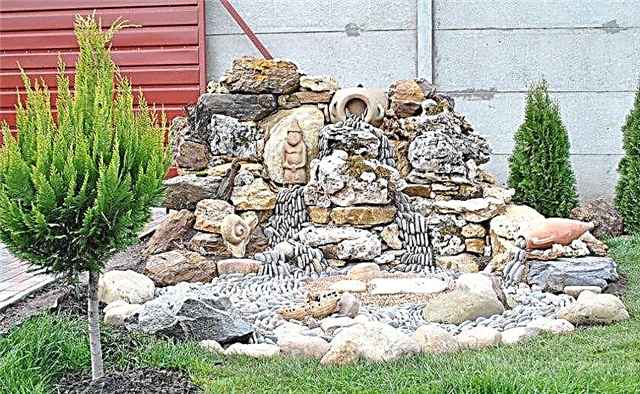
Bridge
Ideal for a dry stream in style only natural wood. Also simply a log that harmoniously looks like it fell and bent over the channel also looks harmonious. A wide and flat plate in hue, close to the large boulders that may be present in the project, goes well with the rest of the elements and is a part suitable for the Japanese garden.
The wooden structure must be ready and well reinforced. After laying the pebbles, the fastening parts will be difficult to dismantle. There are ready-made design solutions for sale in various garden centers; you can purchase a bridge that matches the style in such stores. But it’s easier to pick up the material directly on the spot, considering different options - until the final decision on color and compatibility with the stones.
 To enter the stream into the landscape, you must use the sand. Sand allows you to train and experiment until the “sketch” is the most optimal.
To enter the stream into the landscape, you must use the sand. Sand allows you to train and experiment until the “sketch” is the most optimal.
Planting plants
Plants used for planting along a stream should be associated with natural bodies of water.
Did you know? For several thousand years, Chinese Feng Shui has been declaring the design of traditional gardens. And Taoism implies the idea of the unity of nature and man.
For instance:
- Brunner (Brunnera macrophylla);
- tenacious creeping (Ajuga reptans);
- gray fescue (Festuca glauca);
- Aubrieta
The presence of blue, bluish flowers shade dry creek. All sorts of undersized, dwarf shrubs (coniferous trees are especially good, but deciduous creeping, with flowering shoots or varieties with the correct forms are suitable) will not obscure the decorative element, but only emphasize its bends.
Dry Creek Care
To maintain a good dry creek condition, the following care guidelines should be followed:
- irrigation frequency (in heat, stones change the microclimate);
- bed weeding and treatment of plants (from a pallet of grass, flowers);
- mowing grass and cutting bushes (so that these elements do not obscure the streams);
- fight with ants (you need to lift large stones and turn them over);
- moss (either it harmonizes normally, or you don’t like such a natural element, then you need to remove it);
- plant care (fertilizer, cultivation, etc.).
Video: how to make a dry creek
Creating a dry stream in a garden plot or a summer house with your own hands is a fascinating activity. The result is the subject of many years of contemplation, a detail of decoration, maintaining a certain mood. The decor is simple, and it’s nice to look after it. To achieve an ideal, harmonious, color-correct solution, it is useful to contact design specialists, but also independently, after reviewing photos and other images of examples of the Japanese style, it is easy to make a wonderful decorative stream on your own.

